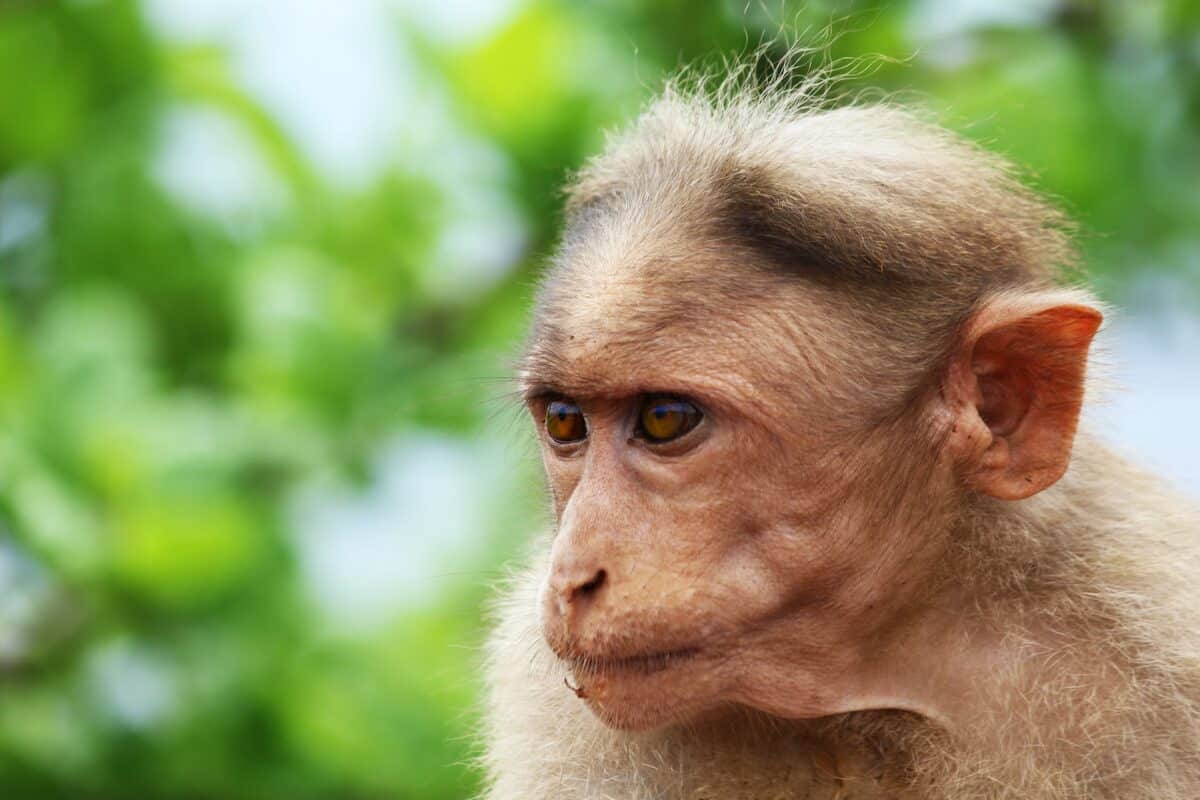Albino-monkey.net travel archives unveil a world of adventure, inviting you on a captivating journey through diverse landscapes and unforgettable experiences. This collection offers a rich tapestry of travel narratives, stunning visuals, and insightful perspectives, promising to ignite your wanderlust and inspire your next great escape. Prepare to be transported to far-flung corners of the globe, immersing yourself in the vibrant cultures, breathtaking scenery, and unique stories that await.
From budget backpacking adventures to luxurious escapes, the archives showcase a variety of travel styles, catering to every explorer’s preference. Detailed descriptions, high-quality images, and engaging videos bring each destination to life, creating a truly immersive experience for readers. The archives are meticulously organized, allowing for easy navigation and discovery of new and exciting travel destinations. Whether you’re a seasoned traveler or a curious armchair adventurer, albino-monkey.net’s travel archives offer a wealth of inspiration and information to fuel your next journey.
Website Structure and Content Analysis: Albino-monkey.net Travel Archives

Albino-monkey.net’s travel archives aim to provide a rich and engaging experience for users seeking inspiration and information about various travel destinations and experiences. The architecture is designed for intuitive navigation and easy access to a diverse range of content.The overall structure prioritizes a clear hierarchy of information, allowing users to quickly locate the type of travel content they are seeking.
This is achieved through a well-defined navigational system and a logical categorization of the archived material.
Primary Content Categories
The travel archives are organized into several primary categories, each focusing on a specific aspect of travel or a geographical region. These categories might include, but are not limited to: Continent-based sections (e.g., “Europe,” “Asia,” “South America”), thematic sections (e.g., “Adventure Travel,” “Luxury Travel,” “Budget Travel”), and potentially even categories focused on specific types of activities (e.g., “Hiking,” “Wildlife Viewing,” “Culinary Tours”).
Imagine yourself exploring breathtaking landscapes, guided by the professionals at an aa travel agent. They’ll curate an itinerary that perfectly aligns with your travel style and budget, ensuring a seamless and stress-free experience. From meticulously planned excursions to unexpected discoveries, every moment will be filled with joy and wonder. For those seeking a more adventurous spirit, consider contacting an aa travel agent specializing in thrilling expeditions.
Let them help you turn your travel dreams into an extraordinary reality.
The specific categories will depend on the existing content within the archives. A clear and consistent naming convention for these categories is crucial for user navigation.
Navigational Structure and User Experience
The website’s navigational structure is designed to be user-friendly and intuitive. A clear and concise menu system, likely located at the top or side of each page, provides easy access to the main content categories. Internal linking within the archives should be robust, allowing users to easily move between related content items. Search functionality is essential, enabling users to quickly find specific information or locations using s.
Embark on your dream adventure! Unleash your inner explorer with the expert guidance of an aa travel agent , crafting unforgettable journeys tailored to your desires. Let them handle the logistics, so you can focus on creating cherished memories. For a truly unique experience, consider booking with a aa travel agent specializing in off-the-beaten-path destinations.
They’ll open doors to hidden wonders and help you discover the world’s most captivating secrets. Your perfect getaway awaits!
A well-designed sitemap would further enhance navigation and accessibility for users. The overall user experience should prioritize ease of use and a visually appealing presentation of the content.
Content Types and Frequency
The travel archives likely contain a variety of content types to cater to diverse user preferences and information needs. This could include blog posts detailing personal travel experiences, high-quality photographs showcasing stunning destinations, videos providing immersive travel perspectives, and potentially interactive maps or itineraries.
| Content Type | Example | Estimated Frequency | Description |
|---|---|---|---|
| Blog Posts | Detailed account of a backpacking trip through Southeast Asia | High | Narrative accounts of travel experiences, offering insights and tips. |
| Photographs | High-resolution images of landscapes, cityscapes, and cultural sites | Very High | Visual representations of travel destinations, enhancing the user experience. |
| Videos | Short video clips showcasing local customs or breathtaking scenery | Medium | Immersive experiences, providing a dynamic perspective on travel destinations. |
| Interactive Maps | A map highlighting key locations mentioned in a blog post or travel guide | Low | Enhanced user engagement and information access. |
Content Quality and Style

Albino-monkey.net’s travel archives strive to transport readers to diverse locations through vivid storytelling and high-quality multimedia. The website achieves this by employing a range of narrative techniques, descriptive language, and visual elements to create an immersive and engaging user experience. The overall tone is inspirational and positive, encouraging exploration and a deeper appreciation for different cultures and landscapes.The success of the travel writing hinges on its ability to create a sense of immediacy and personal connection.
This is achieved through careful selection and implementation of stylistic elements.
Compelling Narrative Techniques
The travel narratives frequently utilize first-person accounts, allowing readers to experience the journey alongside the writer. This personal touch fosters a stronger connection and makes the stories more relatable. For instance, a piece describing a trek through the Himalayas might detail the writer’s physical challenges and emotional triumphs, making the reader feel as though they are participating in the adventure.
Another effective technique is the use of anecdotes and personal reflections, weaving in insightful observations about the local culture, history, or environment. These narratives often incorporate elements of suspense and anticipation, building to a climactic moment or revelation, mirroring the experience of travel itself. The use of descriptive language enhances these experiences, drawing the reader in and painting vivid pictures.
Imagery and Descriptive Language
The website excels in its use of imagery and descriptive language to create a powerful sense of place. Rather than simply stating facts, the writers paint vivid pictures using sensory details. For example, describing a bustling Moroccan marketplace might involve the sights of vibrant fabrics and spices, the sounds of bartering and calls to prayer, the smells of exotic perfumes and roasted meats, and the feel of the warm sun on the skin.
This multi-sensory approach allows readers to truly immerse themselves in the environment. Metaphors and similes are employed to create striking comparisons, further enriching the descriptive language and making the writing more memorable. For example, describing a sunset over the ocean might compare it to “a fiery canvas painted across the horizon.”
Multimedia Enhancement
High-quality photographs and videos are seamlessly integrated into the narratives, significantly enhancing the user experience. Images are not merely decorative; they are carefully selected to complement and amplify the written text. A photograph of a breathtaking vista might accompany a description of a scenic hike, while a video showcasing a traditional dance might illustrate a cultural observation. This combination of visual and written content provides a more complete and immersive experience, allowing readers to connect with the destinations on a deeper level.
The multimedia elements are thoughtfully curated and integrated, avoiding an overwhelming or distracting effect.
Recurring Themes and Motifs, Albino-monkey.net travel archives
Several recurring themes appear throughout the travel narratives. A prominent theme is the transformative power of travel, emphasizing personal growth and self-discovery. Many stories highlight encounters with diverse cultures, showcasing the beauty of human connection and the importance of cross-cultural understanding. Another recurring motif is the appreciation of nature’s beauty and the importance of environmental conservation. This is often reflected in descriptions of awe-inspiring landscapes and discussions of sustainable tourism practices.
Strengths and Weaknesses of the Writing Style
- Strengths: Vivid and evocative language; strong use of sensory details; effective integration of multimedia; engaging narrative techniques; inspirational and positive tone; relatable first-person accounts.
- Weaknesses: Occasional overuse of descriptive language, potentially slowing the pace; some narratives may lack a clear central theme or argument; inconsistency in the length and depth of individual travel pieces.
Embark on a virtual expedition through the albino-monkey.net travel archives and discover a world of untold stories and breathtaking adventures. This curated collection of travel experiences serves as a powerful testament to the transformative power of exploration and the beauty of our diverse planet. Let the vivid narratives and stunning imagery ignite your imagination, inspire your next adventure, and leave you with a profound appreciation for the world’s wonders.
The journey awaits!
Answers to Common Questions
What types of travel experiences are covered in the archives?
The archives encompass a wide range of travel styles, including adventure travel, luxury travel, budget travel, and cultural immersion experiences.
How frequently is new content added to the archives?
The frequency of new content varies, but the archives are regularly updated with fresh travel stories and media.
Can I contribute my own travel stories or photos to the archives?
This information would need to be checked on the albino-monkey.net website itself, as contribution policies are not detailed in the provided Artikel.
Are there interactive elements within the archives?
The Artikel suggests the site encourages user engagement through comments and social media interaction. The specifics are detailed within the archives themselves.